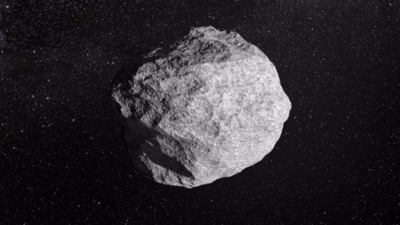UK scientist Dr Robin George Andrews, a volcanologist, has warned that it might be now too late to try to deflect “city killer” asteroid 2024 YR4 which is coming toward Earth and has a one in 43 chance of striking Earth in 2032. If it does, depending on where the strike lands, there will be catastrophic effects as the asteroid is as tall as the Leaning Tower of Pisa. If it strikes land, it could wipe out cities and if it lands in the ocean, the effects would be minimal.
Discovered in December 2024, YR4 currently ranks 3 out of 10 on the Torino Scale. Nasa said it is deploying the James Webb Space Telescope to overserve the asteroid. The asteroid will be at its brightest in March 2025 when the first round of Nasa observations is scheduled. The follow-up will take place in May when YR4 moves away from the Sun. This will be the last opportunity to study it until it returns in 2028.
The UK scientist said the DART (the Double Asteroid Redirection Test) was successful in knocking a 580-ft-wide asteroid off course in 2022. But this does not mean that with this process any asteroid can be deflected “whenever we want”.
“The first is that asteroids like Dimorphos, and smaller, tend to be rubble piles: not solid single rocks, but boulders weakly bound by their own gravity. Hitting them just right can produce that debris-like thrust effect, but if you hit them too hard, you’ll shatter them,” he explained.
“Nobody wants to accidentally “disrupt” an asteroid, because those components can still head for Earth. As I often say, it’s like turning a cannonball into a shotgun spray.”
“This is chaotic, potentially very destructive—and if DART hit Dimorphos a little harder, it would have broken that asteroid too. You have to be very sure that when you hit an Earthbound asteroid, you are deflecting it, not fragmenting it.”
“The second reason DART isn’t a silver bullet is that it did not give Dimorphos as much of a deflection as you think. Yes, the orbit shrank a lot. But you know how much Dimorphos actually moved? The change in velocity delivered by the impact was 2.7mm/s,” the scientist explained.
I am a passionate digital marketer, content writer, and blogger. With years of experience in crafting compelling content and driving digital strategies. I’m always exploring new trends, optimizing strategies, and creating content that resonates with audiences. When I’m not working, you’ll find me diving into the latest digital marketing insights or experimenting with new blogging ideas.
